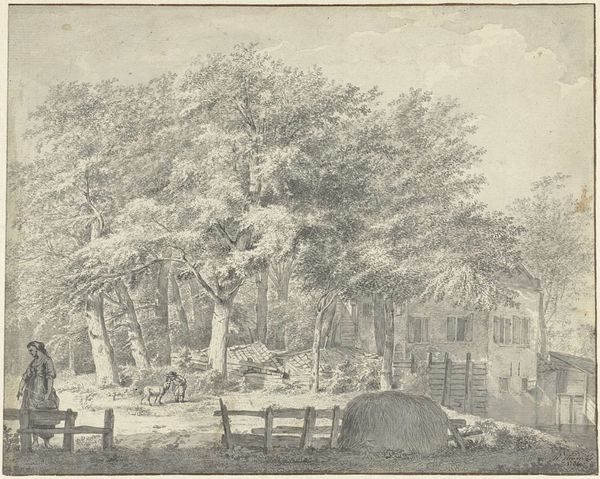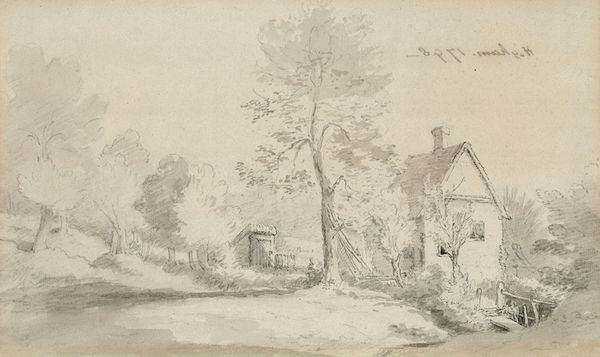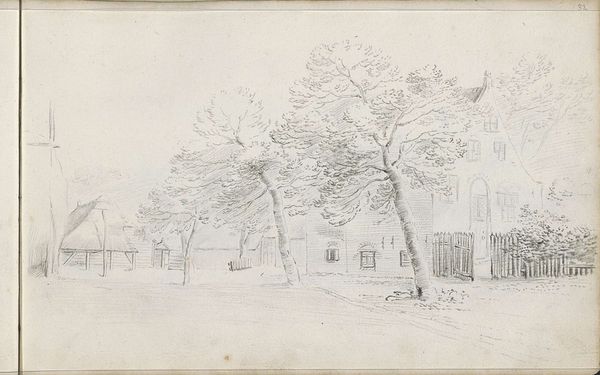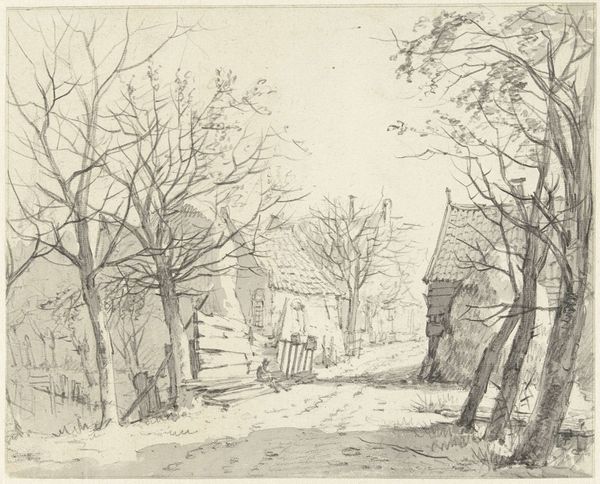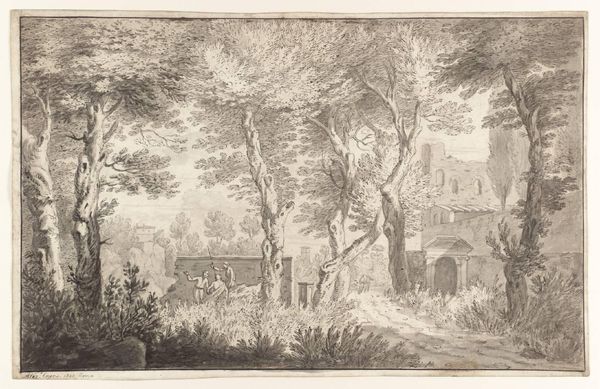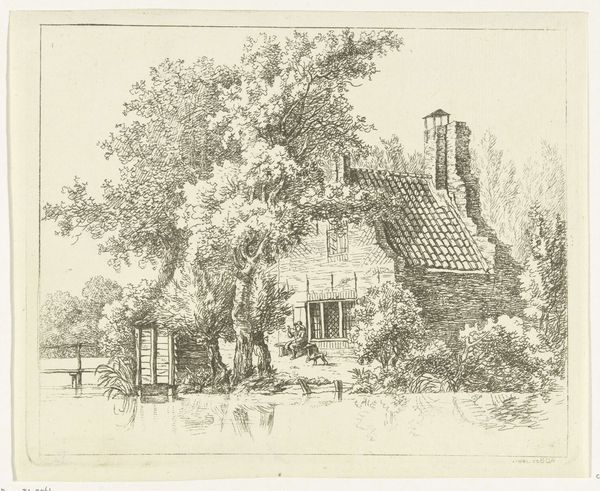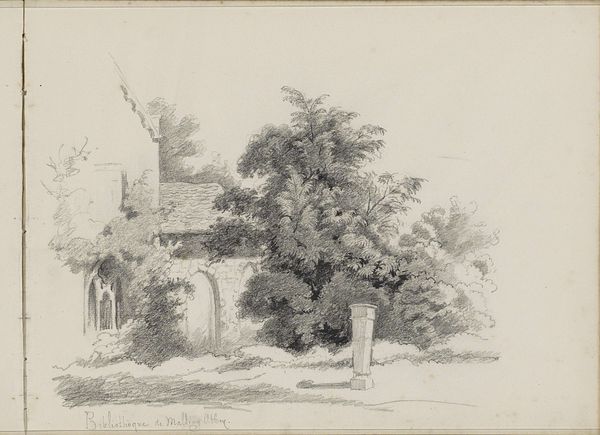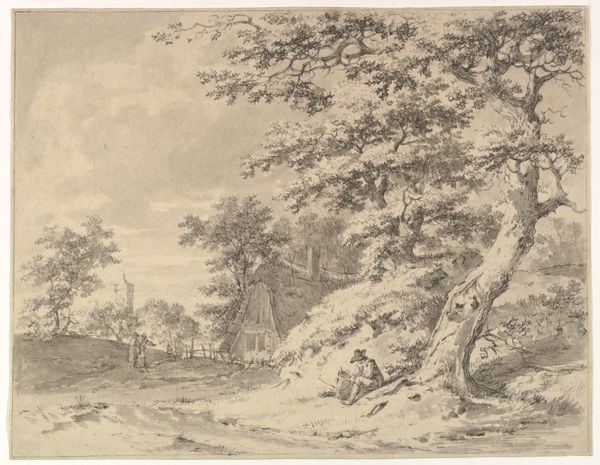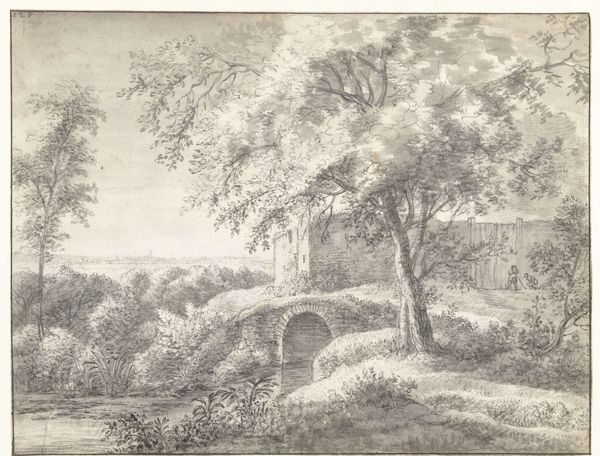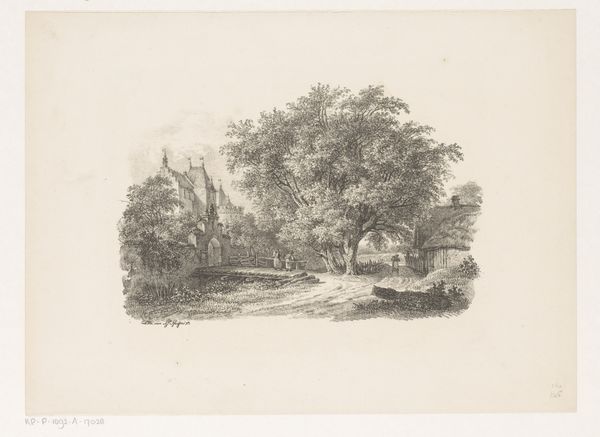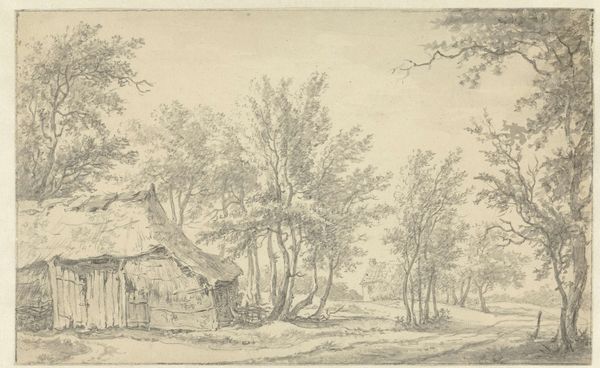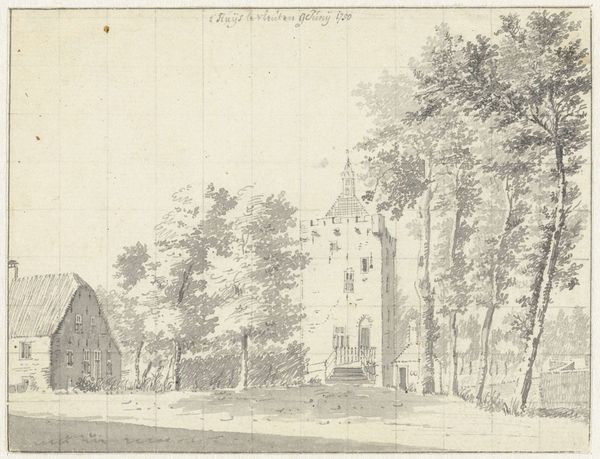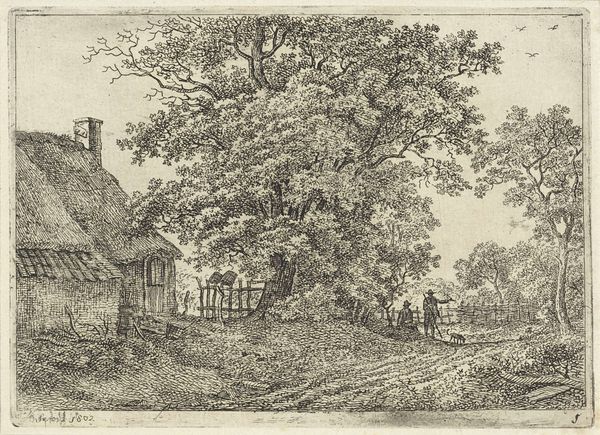
drawing, pencil
#
landscape illustration sketch
#
drawing
#
amateur sketch
#
light pencil work
#
pen sketch
#
pencil sketch
#
old engraving style
#
landscape
#
romanticism
#
pen-ink sketch
#
pencil
#
pen work
#
pencil work
#
initial sketch
Dimensions: height 342 mm, width 388 mm
Copyright: Rijks Museum: Open Domain
Curator: This drawing, "De bouwvallen van het Huis De Haer," was created by Egbert van Drielst in 1801. It’s a pencil drawing depicting the ruins of a house amidst a wooded landscape, and it's currently held at the Rijksmuseum. Editor: My first thought? Hauntingly peaceful. The skeletal remains of architecture barely peek through this riot of nature. You can almost feel the stillness, the quiet reclaiming of space. Curator: Exactly. Van Drielst captures that Romantic fascination with ruins and the power of nature. It speaks to a moment in time, the transience of human endeavor. Editor: It's funny though, ruins romanticized. Like making decay beautiful instead of just...decay. What does that say about how we viewed the past back then? Curator: It suggests a complex relationship. Ruins were, in a way, evidence of a glorious past, now humbled by time. A reminder of mortality, yes, but also a testament to enduring power. It's wrapped up in emerging national identities as well—monuments and heritage became tools for crafting a shared cultural narrative. Editor: So, it’s not just pretty wreckage but politically charged landscape? Curator: Precisely! Landscapes in the early 19th century weren't innocent depictions. They carried potent symbols and emotions relating to history, nationhood and, class. The ruins could represent fallen aristocracy, a cautionary tale of societal change and power dynamics at a pivotal time in European history. Editor: I guess I saw the artist lingering between trees. Did Van Drielst, in a deeper sense, seek to be hidden there himself? Curator: A very evocative interpretation! The act of drawing is an intimate gesture of observation. Maybe it's both—Van Drielst the artist meditating on human folly or merely immortalizing a piece of land for posterity. It's also, quite simply, a document showing us how buildings age; architecture doesn’t always become eternal grandeur, instead it often gets returned to the soil in quiet ways. Editor: The way it catches light, despite the heaviness of its subject matter—there's an honesty there. Curator: Yes, in the subtle artistry it seems as honest as an old diary. An atmospheric window into another time.
Comments
No comments
Be the first to comment and join the conversation on the ultimate creative platform.
